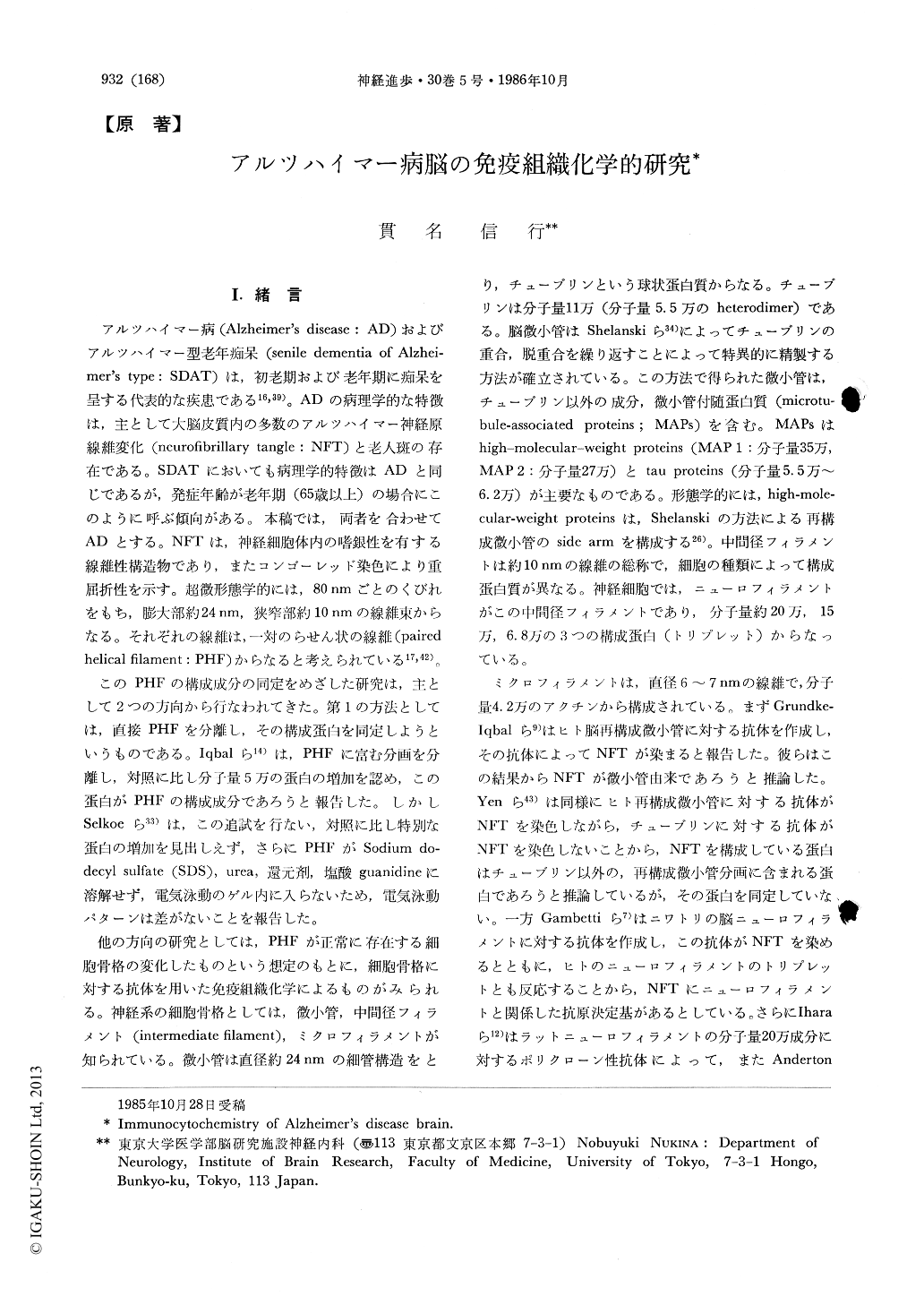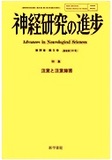Japanese
English
- 有料閲覧
- Abstract 文献概要
- 1ページ目 Look Inside
I.緒言
アルツハイマー病(Alzheimer's disease:AD)およびアルツハイマー型老年痴呆(senile dementia of Alzheimer's type:SDAT)は,初老期および老年期に痴呆を呈する代表的な疾患である16,39)。ADの病理学的な特徴は,主として大脳皮質内の多数のアルツハイマー神経原線維変化(neurofibrillary tangle:NFT)と老人斑の存在である。SDATにおいても病理学的特徴はADと同じであるが,発症年齢が老年期(65歳以上)の場合にこのように呼ぶ傾向がある。本稿では,両者を合わせてADとする。NFTは,神経細胞体内の嗜銀性を有する線維性構造物であり,またコンゴーレッド染色により重屈折性を示す。超微形態学的には,80nmごとのくびれをもち,膨大部約24nm,狭窄部約10nmの線維束からなる。それぞれの線維は,一対のらせん状の線維(pairedhelical filament:PHF)からなると考えられている17,42)。
このPHFの構成成分の同定をめざした研究は,主として2つの方向から行なわれてきた。第1の方法としては,直接PHFを分離し,その構成蛋白を同定しようというものである。Iqbalら14)は,PHFに富む分画を分離し,対照に比し分子量5万の蛋白の増加を認め,この蛋白がPHFの構成成分であろうと報告した。
Abundant senile plaques and Alzheimer's neurofibrillary tangles (NFT) throughout the cerebral cortex are the most important pathological features of Alzheimer's disease (AD). The results of immunohistochemical study is still controversial. Some studies report that antineurofilament antibodies stain Alzheimer's NFT and others report that antibodies against microtubules fraction stain NFT. In this study we raised antiserum against microtubule-associated proteins (MAPs) and studied the reactivity of NFT and senile plaques with antibodies against MAPs and tubulin.
Twice cycled microtubules (MTs) were prepared from rat brains according to the method of Shelanski et al. MTs were electrophoresed and the bands of high-molecular-weight microtubule-associated proteins (MAPs: MAP 1, MAP 2) were extracted. The MAPs were electrophoretically eluted and injected into a rabbit. Purified MAP2 for the absorption experiment was obtained from re-electrophoresed MAPs. Tubulin was purified from rat brain MTs on phosphocellulose column. An antiserum to tubulin was further purified by the affinity chromatography. The antiserum specificity was tested by the immunoblotting method. Sections from AD and control brains were stained with antiMAPs and antitubulin serum respectively by the avidin biotin complex method. AntiMAPs labeled MAP 1 and MAP 2 on the blot of rat MTs, but labeled mainly the band corresponding to MAP2 and a few low-molecular-weight bands on the blot of human MTs and gray matter homogenates. The MAP 2-absorbed serum could not label those bands. None of the bands on the blot of the human white matter homogenates were labeled with antiMAPs. Anti-tubulin reacted exclusively with tubulin on the blot of brain homogenates.

Copyright © 1986, Igaku-Shoin Ltd. All rights reserved.


